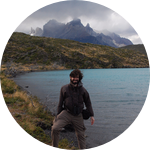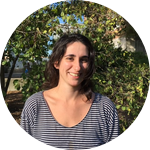About This Project
Though grasslands are increasingly scarce in the Midwest, there are pockets remaining on private lands grazed by cattle. Restoration thus requires balancing the needs of birds with the needs of landowners. To address this, we propose to research habitat quality for grassland birds in a working landscape. Using field data, we study grassland bird abundance, prey abundance, and nest site selection in response to invasive management and human decisions driving landscape changes.
Ask the Scientists
Join The DiscussionWhat is the context of this research?
Less than 0.1% of tallgrass prairie remains in the Midwest. Following this habitat loss, grassland birds have experienced steeper, more widespread declines than any other avian guild in North America. The Grand River Grasslands (GRG) project seeks to mitigate this crisis. The GRG is a 70,000-hectare region on the Iowa-Missouri border. In contrast to other areas of the Midwest, grasslands are still dominant in the region, consisting of private land (~80%) and nature reserves (~20%). Because of this, the GRG has been identified as the best opportunity to restore a functional tallgrass prairie in the Midwest. We joined this GRG project for our graduate work, and have begun contributing to long-term datasets quantifying the response of birds to invasive management, fire, and grazing.
What is the significance of this project?
Grasslands hold both social and ecological value, so managing grasslands is a natural resource challenge that cuts across multiple groups of stakeholders. Management needs collaboration across disciplines and across the public-private land divide. Studying grassland birds in this context will help determine the possibilities for maintaining high quality habitat in a region where habitat is scarce and shrinking. The Grand River Grasslands restoration project seeks to halt the trend towards extinction for the tallgrass ecosystem by exploring how management can benefit grassland birds in a productive context. Our research, part of the larger GRG initiative, uses a social-ecological system framework to explore the potential of productive grasslands to serve as high-quality habitat.
What are the goals of the project?
Our goal is to evaluate the potential of our restoration efforts to benefit grassland birds. To achieve this aim, have several objectives. First, we will explore how grassland birds and their arthropod prey respond to invasive management. This objective is in the context of a landscape-scale experiment that evaluates the impact of herbicide, fire, and grazing on birds and insects. Second, we will explore the restoration potential of private land using a survey, determining how attitudes affect willingness to improve bird habitat. Third, we will quantify grassland bird nest placement through space and how it relates to fragmentation. Finally, we will evaluate the focal species concept, investigating whether saving habitat for the economically valuable quail benefits songbirds.
Budget
We sincerely believe that this multidisciplinary approach, with both ecological and social data, is necessary to fully realize the potential of the remaining habitat in the fragmented Midwest. However, the nature of this project translates into a sizable time investment in southern Iowa-northern Missouri during the grassland bird breeding season. Our activities, explained in detail in the Methods section, include nest searching using a rope-dragging method and arthropod sampling using a sweep-vacuum method, both of which require two participants. This is in addition to the effort required for nest monitoring, avian surveys, and the data management involved in a landowner survey. There is extensive nest searching and other field sampling experience on our team, and based on our experience a field technician is necessary in order to achieve our aims. We have outside funding for housing and materials/supplies, but no additional funding for a technician.
Endorsed by
 Project Timeline
Project Timeline
Oct 28, 2016
Project Launched
Apr 03, 2017
Hire field technicians for summer 2017 fieldwork
May 22, 2017
Begin summer 2017 fieldwork
Aug 11, 2017
Wrap up summer 2017 fieldwork
Meet the Team
Team Bio
Interest in preserving and restoring the Grand River Grasslands has forged cooperative endeavors among ecologists at multiple universities, non-governmental conservation groups, and land management agencies beginning in 2006. More recently, we joined this project as graduate students, contributing to long-term datasets on birds, arthropods, vegetation, and landowner opinions.
Jane Capozzelli
I am currently a first year Masters student at the University of Illinois at Urbana-Champaign studying breeding grassland birds. I am interested in applied ecology for the direct benefit of wildlife conservation. I am passionate about birds and inspired by their strategies for surviving in anthropogenic landscapes. I research questions of habitat quality, which are increasingly important as the amount of land and the number of species it can support continues to dwindle. Therefore, I work to increase the quality of habitat through management to mitigate biodiversity loss.
I have the experiences necessary to undertake this research. First, I served as a grassland bird field technician in summer 2016, searching for nests and identifying prairie plants. Second, I have significant experience handling birds through my previous work as a licensed New York wildlife rehabilitator.
Jaime J. Coon
I am currently a third-year PhD student at the University of Illinois at Urbana-Champaign studying how productive grasslands can be restored to support biodiversity. I came to the University of Illinois after completing a B.S. in Biology with a minor in sociology. I joined the Grand River Grasslands project with the goal of integrating the natural and social sciences to address conservation problems. Addressing these complex problems requires a systems-based approach, and so my research seeks to integrate human dimensions and ecology. My ultimate goal is to understand, prevent, and reverse loss of biodiversity, reconciling human land use with the needs of biological communities.
This project will allow me to complete the final field season of my dissertation, where I am exploring both social and ecological responses to invasive plant management, including avian and arthropod response to herbicide and the potential barriers and benefits of invasive plant management for the human populations that dominate the agricultural Midwest. My previous two field seasons and previous projects have given me the necessary field and laboratory experience needed to complete this project, including extensive experience nest searching, identifying grassland birds, sampling for and identifying grassland arthropods, and completing the steps necessary to implement human subjects research.
Project Backers
- 64Backers
- 103%Funded
- $3,921Total Donations
- $60.32Average Donation




